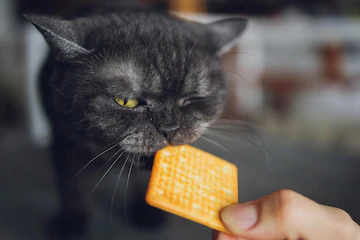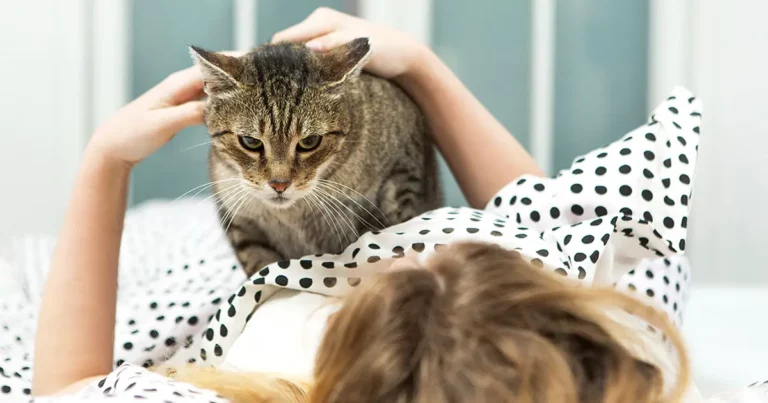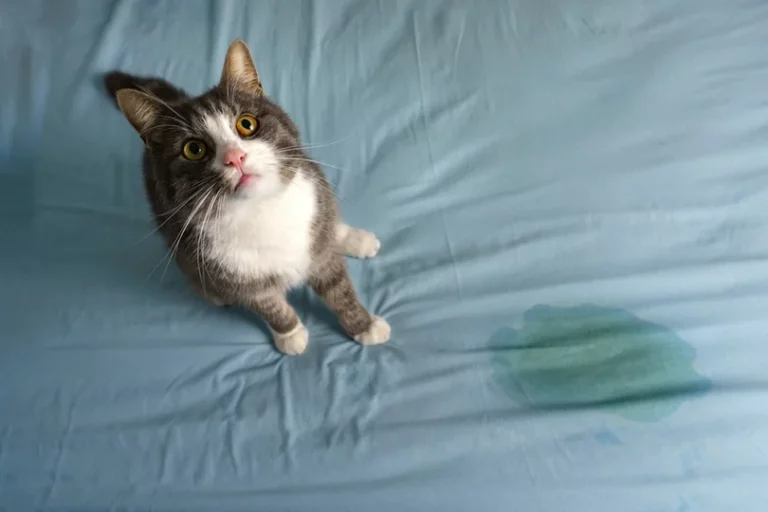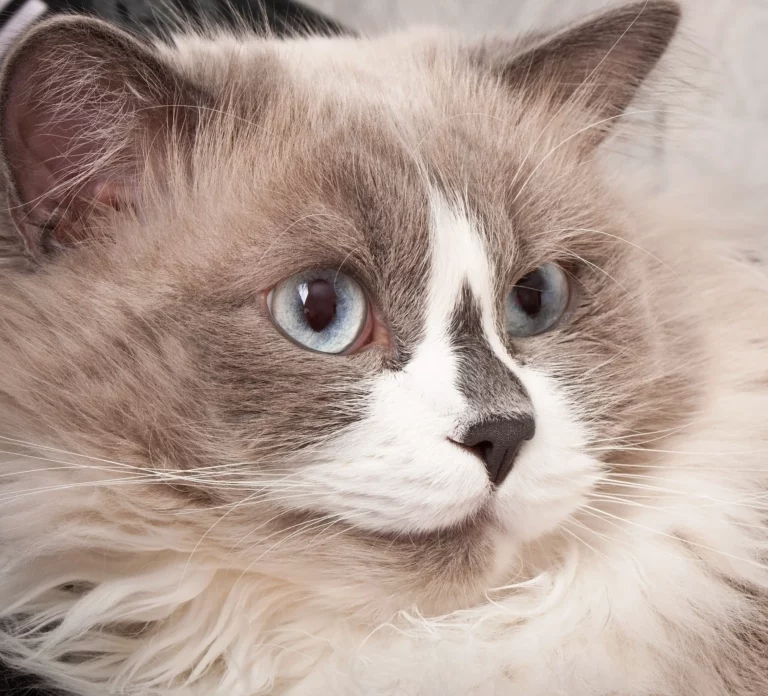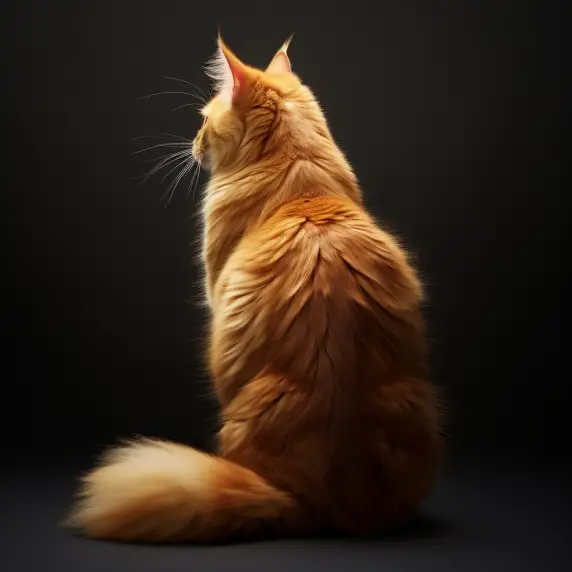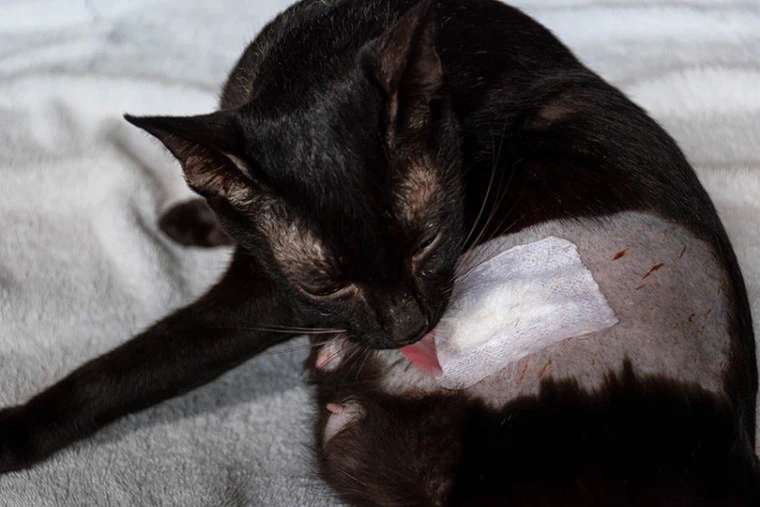The Mystery of the Squeaking Cat: Why Some Cats Don’t Meow?
If you’ve ever spent time around cats, you’ve probably noticed that they have a wide range of vocalizations. From purring to hissing, cats are known for their diverse and unique sounds. But have you ever encountered a cat that squeaks instead of meowing? In this blog post, we’ll delve into the fascinating world of squeaking cats and explore the possible reasons behind this endearing, yet sometimes perplexing, behavior.
If you’ve ever spent time around cats, you’ve probably noticed that they have a wide range of vocalizations. From purring to hissing, cats are known for their diverse and unique sounds. But have you ever encountered a cat that squeaks instead of meowing?
In this blog post, we’ll delve into the fascinating world of squeaking cats and explore the possible reasons behind this endearing, yet sometimes perplexing, behavior.
Understanding Cat Vocalizations
The range of cat vocalizations
Cats possess a vast repertoire of sounds they use to communicate with humans and other animals. Some of the most common vocalizations include purring, hissing, growling, chattering, and, of course, meowing. Each sound has its own purpose, from expressing contentment and happiness (purring) to conveying fear or anger (hissing and growling). Cats may also chirp or chatter when observing birds or other prey, as a way of expressing their excitement or frustration.
The differences between meows, squeaks, and other sounds
Meowing is the most widely recognized cat vocalization and is primarily used to communicate with humans. Cats rarely meow at each other, suggesting that this sound has evolved to get our attention and convey their needs or emotions. Meows can vary in pitch, volume, and duration, which can help convey different messages.
Squeaking, on the other hand, is a higher-pitched and shorter sound that may seem similar to a meow at first but is distinctly different upon closer listening. Squeaks can be used by cats to express a variety of emotions or needs, just like meows, but they may also be the result of specific factors or circumstances that we’ll explore in the following sections. Understanding these differences is crucial for appreciating the complexity of feline communication and ensuring that we’re meeting our cats’ needs in the best way possible.
The Science Behind Squeaking Cats
The anatomy of a cat’s vocal cords and larynx
A cat’s ability to produce a variety of sounds, including meows and squeaks, lies in its vocal cords and larynx. The vocal cords, also known as vocal folds, are two bands of muscle tissue that vibrate to create sound when air passes through them. The larynx, or voice box, houses the vocal cords and controls the pitch and volume of a cat’s vocalizations.
How vocal cord abnormalities can lead to squeaking
In some cases, a cat may squeak instead of meow due to abnormalities in its vocal cords or larynx. If the vocal cords are unable to vibrate at the right frequency or tension, the resulting sound may be higher-pitched or weaker than a typical meow. This can result in a squeak-like vocalization. Similarly, issues with the larynx, such as inflammation or injury, can affect a cat’s ability to produce a clear and strong meow, leading to squeaking sounds.
The role of genetics in cat vocalizations
Genetics can also play a role in determining a cat’s unique vocalizations. Some breeds, such as the Siamese, are known for their distinct, loud meows, while other breeds may naturally produce softer or more subtle sounds. It’s possible that a cat’s tendency to squeak instead of meow is a result of its genetic makeup, passed down from its ancestors. While more research is needed to fully understand the genetic factors influencing feline vocalizations, it’s clear that genetics can contribute to a cat’s unique voice.
Environmental and Social Factors
The impact of early socialization on cat vocalizations
A cat’s early socialization experiences can significantly impact its vocalizations. Kittens learn how to communicate with their mothers and littermates through vocalizations, and this process helps shape their unique voices. If a kitten grows up in an environment where squeaking is more common or encouraged, it may continue to squeak instead of meow into adulthood. Additionally, if a kitten is separated from its mother or littermates too early, it may not develop a full range of vocalizations, resulting in a tendency to squeak.
How stress or anxiety can cause a cat to squeak
Stress and anxiety can have a profound effect on a cat’s vocalizations, causing them to squeak instead of meow. Cats who are experiencing stress or anxiety may produce shorter, higher-pitched sounds as a way of expressing their discomfort. If your cat has recently experienced a significant change, such as moving to a new home or the arrival of a new pet or family member, its squeaking may be a sign of stress. It’s essential to monitor your cat’s behavior and provide a calm and stable environment to help reduce stress and anxiety.
The role of a cat’s living environment in shaping its vocalizations
The living environment can also influence a cat’s vocalizations. Cats living in multi-cat households may develop different vocalizations than those living as the only cat in the home. If a cat lives with another squeaking cat, it may adopt the same vocalizations as a form of social mimicry. Additionally, a cat’s interactions with its human family members can shape its vocalizations. If a cat learns that squeaking gets more attention or results in a desired outcome, it may continue to squeak instead of meow to communicate its needs or emotions.
Health Concerns Related to Squeaking
Common health issues that may cause a cat to squeak
While many cats squeak for benign reasons, it’s essential to be aware of potential health issues that may cause a change in your cat’s vocalizations. Some common health concerns that could lead to squeaking include:
- Upper respiratory infections: Inflammation or congestion in a cat’s nasal passages, throat, or larynx can affect its ability to produce clear vocalizations, resulting in squeaks.
- Laryngitis: Inflammation or infection of the larynx can cause hoarseness or changes in a cat’s voice, including squeaking.
- Dental issues: Pain or discomfort from dental problems, such as tooth decay, gum disease, or oral injuries, may cause a cat to alter its vocalizations to avoid further pain.
- Hypothyroidism: This hormonal condition can affect a cat’s voice and energy levels, leading to changes in vocalizations like squeaking.
When squeaking may be a sign of a serious problem
It’s crucial to monitor your cat’s behavior and vocalizations closely to determine if its squeaking may indicate a more serious issue. Signs that your cat’s squeaking may be due to a health problem include:
- A sudden change in vocalizations, especially if accompanied by other signs of illness, such as lethargy, loss of appetite, or changes in grooming habits.
- Consistently squeaking when attempting to eat, drink, or groom, as this may indicate pain or discomfort in the mouth or throat.
- Frequent or persistent squeaking, even when not seeking attention or attempting to communicate, which could signal distress or pain.
Guidance on when to consult a veterinarian
If you’re concerned that your cat’s squeaking may be due to a health issue, it’s important to consult with a veterinarian. A thorough examination can help identify any underlying medical problems that may be causing your cat’s change in vocalizations. Early intervention is key to addressing potential health issues and ensuring your cat’s well-being. Don’t hesitate to seek professional advice if you’re worried about your cat’s squeaking or overall health.
Encouraging a Squeaking Cat to Meow
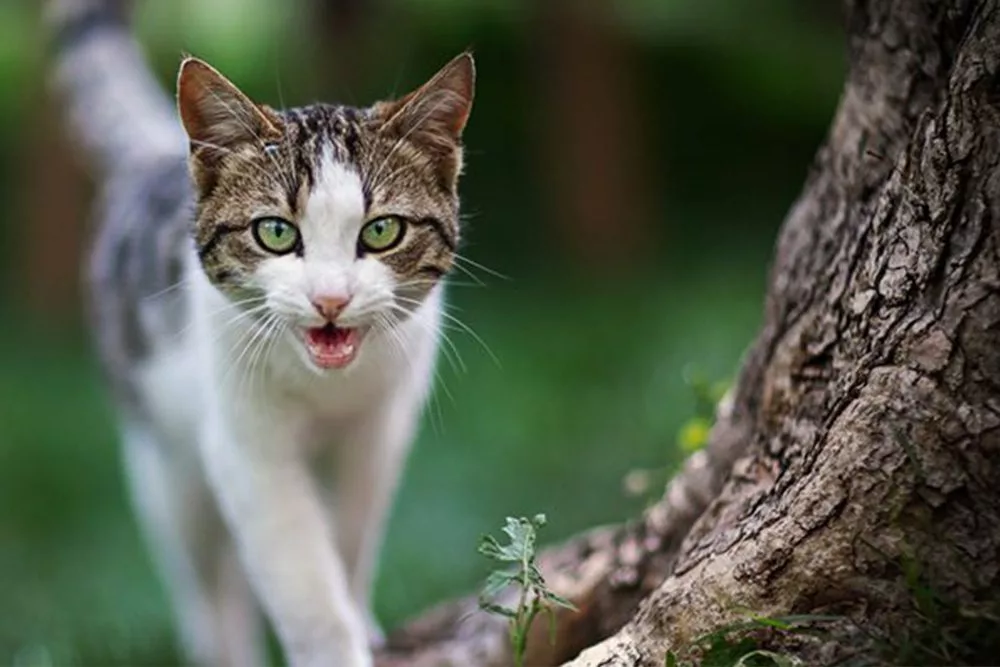
The benefits of positive reinforcement and training
While it’s essential to appreciate your cat’s unique voice, you may still wish to encourage your squeaking cat to meow more often. Using positive reinforcement and training techniques can help your cat learn to produce a wider range of vocalizations. Rewarding your cat with treats, praise, or affection when it meows can reinforce the desired behavior and help your cat associate meowing with positive outcomes.
Techniques for encouraging a cat to meow more often
Here are some strategies to encourage your squeaking cat to meow:
- Imitate meowing: Gently mimic the sound of a meow to your cat, and offer praise or a treat when it responds with a similar vocalization.
- Engage in interactive play: Use toys or games to stimulate your cat’s natural instincts and encourage it to vocalize during playtime. Reward your cat with treats or affection when it meows.
- Utilize meow-eliciting stimuli: Identify situations or items that trigger your cat to meow, such as opening a can of wet food or shaking a treat container. Encourage your cat to meow in response to these stimuli by rewarding it with treats, praise, or affection.
- Be patient and consistent: Remember that training your cat to meow may take time and patience. Be consistent in your efforts and avoid punishing your cat for squeaking, as this can create negative associations and hinder progress.
Understanding a cat’s unique communication style
It’s important to remember that each cat is an individual with its own distinct communication style. While you can try to encourage your cat to meow more often, it’s crucial to respect and appreciate its natural tendencies. A squeaking cat is just as capable of expressing its needs and emotions as a meowing cat, and understanding your cat’s unique voice will help you build a stronger bond and better meet its needs.
Tips for Living with a Squeaking Cat
Appreciating the uniqueness of a squeaking cat
Living with a squeaking cat can be a delightful experience, as their adorable vocalizations often add a touch of charm and personality to their interactions. Embrace your cat’s uniqueness and cherish the special bond that you share with your squeaking feline companion.
Monitoring your cat’s vocalizations and behavior
It’s crucial to keep a close eye on your cat’s vocalizations and behavior to ensure that its squeaking isn’t a sign of an underlying health issue or distress. Regularly observe your cat for any changes in its vocalizations or behavior that might warrant a visit to the veterinarian.
Communicating effectively with your squeaking cat
Understanding your squeaking cat’s vocalizations can help you communicate more effectively with your feline friend. Pay attention to the context in which your cat squeaks and the different tones or pitches it uses to express various needs or emotions. Over time, you’ll develop a deeper understanding of your cat’s unique communication style, allowing you to better anticipate and meet its needs.
Creating a supportive environment for your squeaking cat
Ensure that your cat has a comfortable and stress-free environment that allows it to express itself freely. Provide your cat with a safe space where it can retreat if it feels overwhelmed or anxious, and minimize exposure to loud noises or other stressors that could negatively impact its vocalizations.
Sharing your experiences with other cat lovers
Connect with fellow cat enthusiasts and share your experiences living with a squeaking cat. This can help you gain insights and tips from others who have faced similar situations and foster a sense of community among cat lovers. Sharing your stories can also help raise awareness about the diverse range of feline vocalizations and encourage others to appreciate and understand their own cats’ unique voices.
Final Thoughts
There are several factors that could contribute to a cat squeaking instead of meowing. These factors include anatomical differences in the vocal cords and larynx, genetic predispositions, early socialization experiences, stress or anxiety, environmental influences, and underlying health issues. Understanding the potential reasons behind your cat’s squeaking can help you better appreciate its unique voice and communication style.
As cat lovers, it’s essential to recognize and appreciate our feline friends’ individuality, including their vocalizations. Whether your cat squeaks, meows, or communicates in another way, taking the time to understand its unique voice will help you foster a deeper bond and ensure that you’re meeting its needs. Remember that each cat has its own way of expressing itself, and by embracing your cat’s distinct vocalizations, you’ll be better equipped to provide the love and care it deserves.
Frequently Asked Questions
Can a cat’s vocalizations change over time?
Yes, a cat’s vocalizations can change over time due to various factors such as aging, health conditions, stress, or changes in the environment. As cats age, their vocalizations might become weaker, more frequent, or change in pitch. It’s essential to monitor your cat’s vocalizations and consult a veterinarian if you notice any sudden or concerning changes.
Do certain cat breeds squeak more than others?
While there isn’t definitive evidence to suggest that certain breeds squeak more than others, some breeds are known for their unique vocalizations. For example, Siamese cats are famous for their loud, distinctive meows. Genetic factors may contribute to a cat’s tendency to squeak, but more research is needed to fully understand the connection between breed and vocalization tendencies.
How can I tell if my cat’s squeaking is due to pain or discomfort?
If your cat’s squeaking is accompanied by other signs of pain or discomfort, such as lethargy, loss of appetite, changes in grooming habits, or difficulty eating or drinking, it may be due to an underlying health issue. Monitor your cat closely for any changes in behavior and consult your veterinarian if you have concerns about your cat’s well-being.
Are there any treatments or therapies to help a squeaking cat meow?
If your cat’s squeaking is due to a medical issue, your veterinarian may recommend treatments to address the underlying cause, such as medication for inflammation, dental care, or hormone therapy for hypothyroidism. In cases where the squeaking is not caused by a medical issue, positive reinforcement and training techniques can be employed to encourage a wider range of vocalizations, including meowing.
Is it normal for a cat to make no sound at all when attempting to meow?
Some cats may make little to no sound when attempting to meow, which is sometimes referred to as a “silent meow.” This can be a normal variation in feline vocalizations, but it could also be due to health issues or anatomical differences in the vocal cords or larynx. If you’re concerned about your cat’s vocalizations, consult your veterinarian to rule out any underlying health problems.

